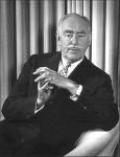Aviation history
Col. Harry Stewart downed three advanced Nazi fighter planes in one day, then surprised the Air Force when he and his Tuskegee teammates won the first "top gun" competition.
After three of his plane's engines flamed out, Capt. John Murray was forced to land at night during a ferocious storm in the middle of the ocean.
Seventy-five years ago the "first lady of the air" vanished over the Pacific Ocean attempting to circumnavigate the globe. Today there may be renewed hope of solving the mystery.
While lauded for their 1903 flight, the Wright brothers were not convinced of their airplane’s reliability to sustain long, controlled flights until October 1905
What the Wright brothers did in a wild and distant place made its name famous around the world. Their biographer visits the Outer Banks to find what remains of the epochal outpost.
Seventy-five years ago a powered kite landed on a cruiser. From that stunt grew the weaponry that has defined modern naval supremacy.
A few days after Lindberg's crossing, the second flight across the Atlantic carried the first passenger and was lucky to make it to Germany.
The planes were fragile and the Boche was tough, but the girls were pretty, the wine was good, and death was something that happened to someone else





